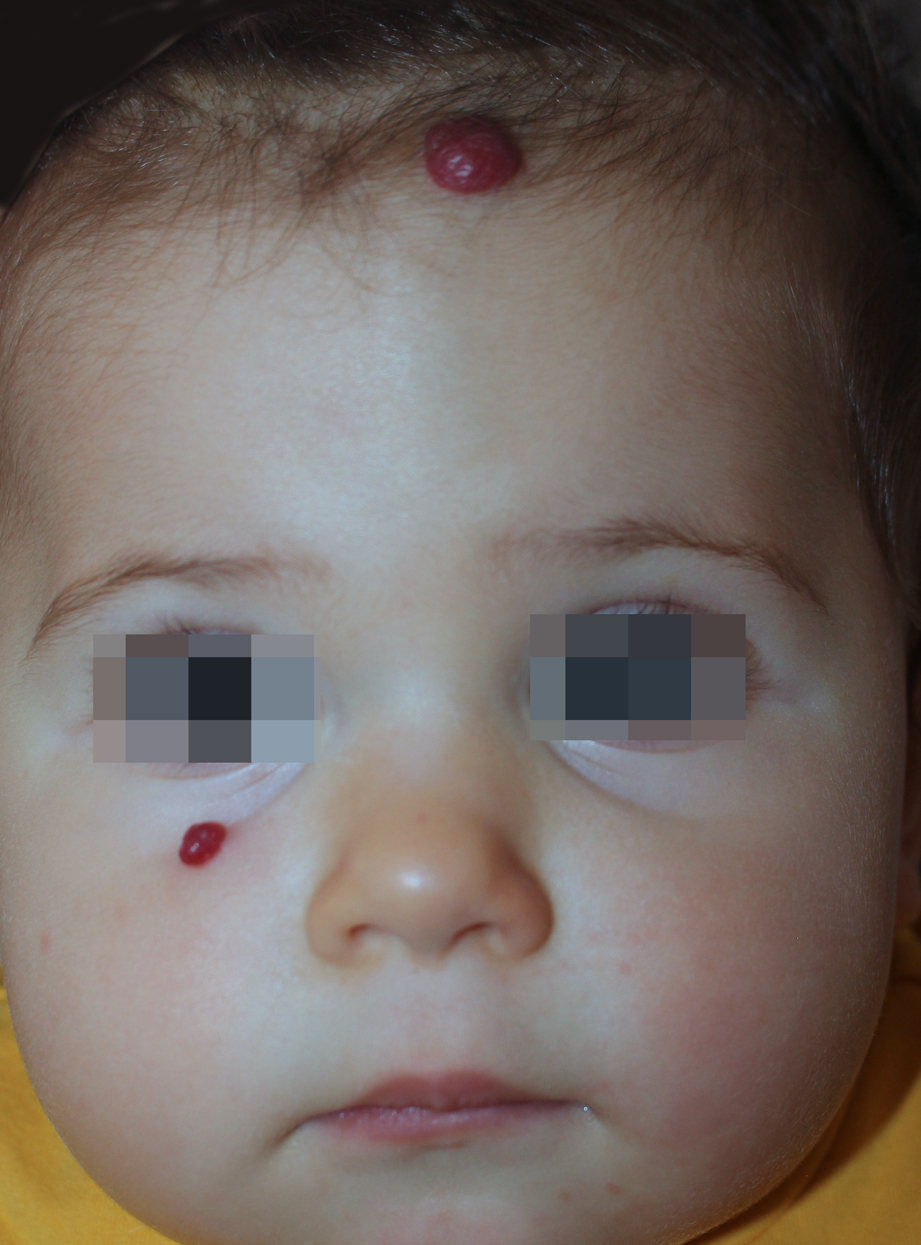Infantile hemangioma and pyogenic granuloma in a 12-month-old little girl.

Downloads
DOI:
https://doi.org/10.26326/2281-9649.30.1.2080How to Cite
Abstract
We have not found in the literature cases of infantile hemangioma and pyogenic granuloma simultaneously present in the same patient. Pyogenic granuloma (PG), although morphologically similar to infantile hemangioma (IH), differs essentially in the age of onset, perinatal for IH, at any age for the PG. Problems arise when PG starts early or in particular locations (6); in a series of 104 cases, 16% occurred in the first year of life (3); cases of congenital PG have also been described (1, 4, 5). In these cases PG differs from hemangioma in its faster growth, easy bleeding, lobulated appearance and positive GLUT1 on immunohistochemistry (see table 1).
The therapeutic effect of beta blockers in IH has emphasized their antiangiogenic activity. It was initially thought that beta-blockers were active mainly in IH due to the presence of placental receptors such as those for GLUT1. However, antiangiogenic activity has also been exploited in oncology to curb the clinical course of many tumors, especially melanoma (7). To remain within the field of angiomas it has been shown that the PG also expresses betaadrenergic receptors; so the use of beta-blockers has been tried both orally and topically in PG (2). Oral propranolol has been used successfully in multifocal congenital PG (1); timolol, propranolol and atenolol have been mainly used for topical use. Their use has shown some efficacy in small PGs and even more in our opinion in reducing PG recurrences after curettage of the initial lesion.
